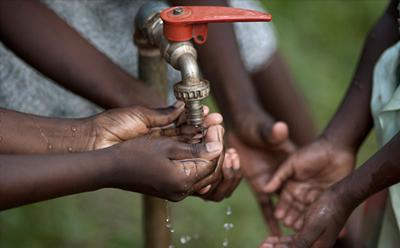Southampton geographer part of international team selected among UNICEF’s best research projects 2015

A Geography academic from the University of Southampton is among a team of researchers whose paper has been recognised as one of 12 Best of UNICEF Research projects for 2015.
Dr Jim Wright, Associate Professor in Geographical Information Systems, worked with colleagues from the University of North Carolina at Chapel Hill, USA, and WaterAid, exploring the safety of drinking water worldwide.
Their paper Faecal Contamination of Drinking Water in Low- and Middle-Income Countries: A systematic Review and Meta-Analysis investigates the reality of people’s access to safe drinking water – perceived as a human right and a fundamental requirement for good health.
The project reveals that the numbers of people globally with access to genuinely safe water may have been routinely and seriously overestimated and looks at ways in which targets and indicators can be developed to enhance the monitoring of drinking water around the world.
Jim was involved in the project in many different ways from contributing to the overall study design, developing strategies for tracking down the many studies of drinking water contamination from around the world, recording statistics and analysing findings, as well as helping write the final paper.
He said: “The monitoring of the progress towards the Millennium Development Goal regarding access to safe water distinguished the ‘haves’ from the ‘have nots’. The ‘haves’ were those people that could access piped water, boreholes, protected springs and other water sources generally considered to be protected from contamination.
“Monitoring of the proposed new Sustainable Development Goals is more subtle and aims to pick out several different tiers of water service, rather than simply the ‘haves’ and ‘have nots’. Water quality is part of the bigger service delivery picture and our research can help inform the shape of these new tiers for use in international monitoring.
“If we can better understand how microbiological contamination varies between different types of water sources, this can help people make informed choices about the pro and cons of installing and managing these different source types.”
The Best of UNICEF competition was launched two years ago to recognise outstanding research and to share findings with UNICEF colleagues and the wider community concerned with achieving child rights.
This year 99 applications were received with the final 12 being selected by an external panel for the quality of their research and methods, and the relevance of their topic and findings.
Jim said: “I am delighted that our study has been selected from the 99 put forward for consideration. It is a marker, not just of the quality of the research, but a sign of its potential to contribute to UNICEF’s mission to improve the lives of children around the world.”
To see the Best of UNICEF Research publication visit www.unicef-irc.org/publications/783